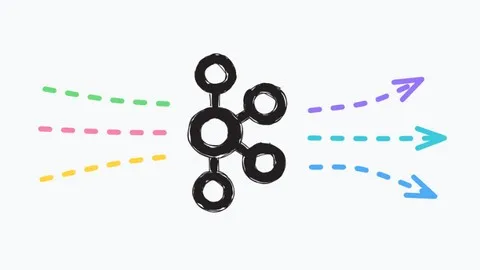Apache Kafka - Kafka Connect (Everything You Need To Know)
Published 8/2025
MP4 | Video: h264, 1920x1080 | Audio: AAC, 44.1 KHz
Language: English | Size: 413.98 MB | Duration: 1h 20m
Published 8/2025
MP4 | Video: h264, 1920x1080 | Audio: AAC, 44.1 KHz
Language: English | Size: 413.98 MB | Duration: 1h 20m
Master Kafka Connect with hands-on projects: source & sink connectors, REST API, transformations, and error handling.
What you'll learn
Understand the architecture and core concepts of Kafka Connect, including how connectors, workers, and tasks operate
Set up and configure source and sink connectors to integrate Kafka with various data systems.
Use the Kafka Connect REST API to create, manage, and monitor connectors effectively.
Apply Single Message Transformations (SMTs) to modify data in-flight.
Implement robust error handling strategies, including configuring dead letter queues (DLQs) for failed records.
Requirements
Basic understanding of Apache Kafka concepts (producers, consumers, topics, partitions).
Familiarity with Docker and Docker Compose for running containers.
Description
Apache Kafka is one of the most popular platforms for real-time data streaming, and Kafka Connect is the key to integrating Kafka with external systems—without writing a single line of producer or consumer code. In this course, you’ll gain practical, hands-on experience setting up and managing Kafka Connect, learning exactly how to move data into and out of Kafka efficiently and reliably.We’ll start by exploring the fundamentals—how Kafka Connect works, the difference between source and sink connectors, and the two modes of operation: standalone and distributed. Then we’ll jump into real-world projects, deploying connectors that stream data from databases, files, and APIs into Kafka, and export Kafka topics to systems like Elasticsearch and S3.Along the way, you’ll learn how to:Use the Kafka Connect REST API to create, update, and manage connectors programmatically.Apply Single Message Transformations (SMTs) to filter, modify, and enrich data “in-flight.”Configure error handling with dead letter queues to build fault-tolerant pipelines.Work with plugins and manage your connector environment with Docker for consistency across any machine.By the end of this course, you’ll have the confidence and skills to design, deploy, and manage production-grade Kafka Connect pipelines. Whether you’re a developer, data engineer, or DevOps professional, this course will give you the tools you need to integrate Kafka into any data ecosystem.
Overview
Section 1: Introduction
Lecture 1 Intro
Section 2: Kafka Connect - Theory
Lecture 2 What is kafka connect
Lecture 3 How Kafka Connect works
Section 3: Environment Setup
Lecture 4 Setup
Section 4: Rest API
Lecture 5 Rest API - Theory
Lecture 6 Rest API - Hands on
Section 5: Standalone Mode
Lecture 7 Standalone mode - Hands on
Section 6: Source Connector
Lecture 8 File Source Connect - Hands on
Section 7: Sink Connector
Lecture 9 File Sink Connector - Hands on
Lecture 10 JDBC Sink Connector - Hands on
Lecture 11 Elasticsearch Sink Connector - Hands on
Section 8: Transformations
Lecture 12 Transformations - Theory
Lecture 13 Transformations - Hands on
Section 9: Error Handling
Lecture 14 Error Handling - Theory
Lecture 15 Error Handling - Hands on
This course is for software engineers, data engineers, DevOps professionals, and architects who want to integrate Apache Kafka with external systems using Kafka Connect.



